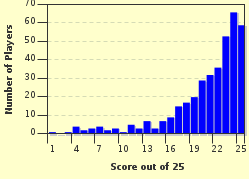Quiz Answer Key and Fun Facts
1. A is for Ashes. The test matches played between two nations are referred to as The Ashes. Which are these two teams?
2. B is for Bails, as essential as the stumps, bat and ball. How many bails are required to be used in a game of cricket?
3. C is for Chin music. What is chin music in cricket?
4. D is for Declare. What does it mean when a captain declares?
5. E is for Extra. Which of the following is NOT considered as an extra run in cricket?
6. F is for Flight. In cricket what does this term mean?
7. G is for Groundsman. Who is a groundsman in cricket?
8. H is for Hawk Eye, a technology used in cricket. For what purpose is this technology used?
9. I is for Innings. What is the duration of an innings in a test match?
10. J is for Jab. When a batsman jabs at a ball, which of the following best describes this term?
11. K is for Keeper. Which of the following statements about the wicket keeper is true?
12. L is for LBW or leg before wicket. When can a batsman be NOT OUT lbw?
13. M is for Maiden. In what context is this word used in cricket?
14. N is for night watchman, a term used usually in test cricket. Who is a night watchman?
15. O is for Opener. Who is an opener in cricket?
16. P is for Point. In what context is this term used in a cricket match?
17. Q is for Quick single. What does this term mean?
18. R is for Retire. In a cricket match, what can this term refer to?
19. S is for Sledging. What does this term refer to?
20. T is for Twelfth man. Who is a twelfth man in cricket?
21. U is for Umpire. How many umpires, on and off the field, are there usually in an International match?
22. V in cricket is for 'the V', what does this term refer to?
23. W is for Walk. What does this term mean in the context of a batsman in cricket?
24. No X; Y is for Yard, which a yardstick for measurement in cricket. How many yards is the pitch used on the cricket field?
25. Z is for Zero. When a batsman gets out for zero, which of the following terms is used to describe his innings?
Source: Author
deepakmr
This quiz was reviewed by FunTrivia editor
spanishliz before going online.
Any errors found in FunTrivia content are routinely corrected through our feedback system.

